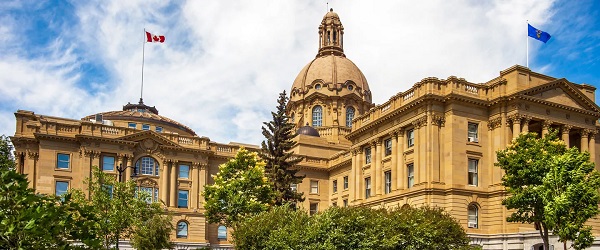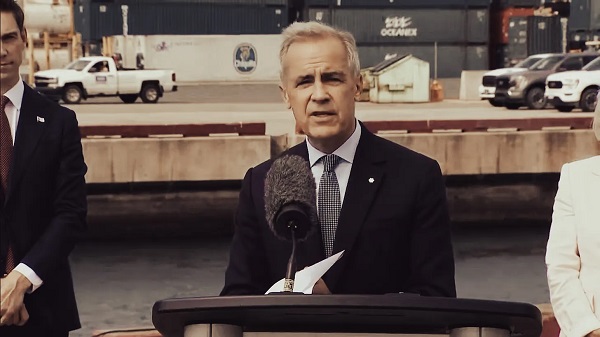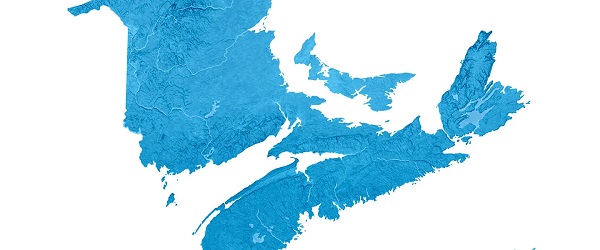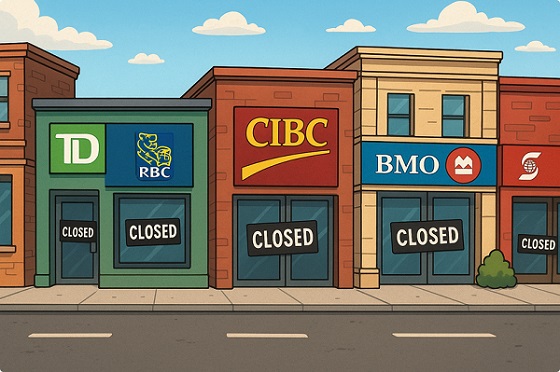Alberta
Province orders dismissal of Chestermere Mayor, three councillors, and all three CAO’s

Chestermere city council. From left: Coun. Blaine Funk, Coun. Shannon Dean, Coun. Stephen Hanley, Mayor Jeff Colvin, Coun. Mel Foat, Coun. Ritesh Narayan and Coun. Sandy Johal-Watt. City of Chestermere/Facebook)
City of Chestermere councillors and senior staff dismissed
Minister of Municipal Affairs Ric McIver has issued a ministerial order dismissing four of the City of Chestermere’s municipal councillors and all three chief administrative officers (CAOs).
After the city failed to comply with the supervision of the official administrator and some of the minister’s directives that have been in place since March 15, 2023, Minister McIver has dismissed Mayor Jeff Colvin, Coun. Mel Foat, Coun. Blaine Funk and Coun. Stephen Hanley, as well as the three CAOs.
The directives, intended to restore good governance to the City of Chestermere, were issued following a municipal inspection. Since then, the city has continued to be managed in an irregular, improper and improvident manner.
“The directives issued by my predecessor are not onerous and represent the bare minimum that citizens ought to expect from their municipal government. However, after undertaking all reasonable efforts to have the city comply with its obligations, it has failed to do so. I am profoundly disappointed that it has come to this, but the people of Chestermere deserve better. This community should be able to have trust in its local elected government.”
While the minister determined that the city has failed to comply with its obligations, he has also determined that dismissal of Coun. Shannon Dean, Coun. Sandy Johal-Watt and Coun. Ritesh Narayan was not justified given their efforts to hold council to account and attempt to move council in a more positive direction toward proper governance practices and compliance with legislation.
Councillors Dean, Johal-Watt and Narayan remain as elected councillors but will have no role in the governance of the city until a byelection is held and council quorum is restored.
The ministerial order dismissing Chestermere council members and senior administration is effective Dec. 4. An official administrator and interim CAO are in place to oversee the City of Chestermere’s governance and operations until a byelection is held to elect new councillors for the vacant positions at a date to be determined in 2024.
Quick facts
- A municipal inspection was ordered by the minister of Municipal Affairs under the Municipal Government Act (Section 571) in May 2022.
- The independent inspection, which concluded in September 2022, found the City of Chestermere to be managed in an irregular, improper and improvident manner.
- An official administrator was appointed in September 2022 to supervise the municipality and its council.
- On March 15, 2023, the minister of Municipal Affairs issued 12 binding directives through a ministerial order requiring the City of Chestermere to take action to address key areas of concern.
- On Oct. 18, the minister of Municipal Affairs issued to the City of Chestermere a notice of intent to issue a ministerial order which would dismiss all seven council members from office, as well as all three CAOs.
Alberta
Province urging post secondary students to apply for loans, grants, scholarships, bursaries and awards

Alberta’s government is helping build the province’s future workforce through funding to support post-secondary students.
Alberta’s government is investing almost $1.2 billion in post-secondary students through loans, grants, scholarships, bursaries and awards. Post-secondary students are essential to building Alberta’s future workforce and ensuring the province remains competitive both nationally and internationally.
As of Sept. 2, Alberta Student Aid has received more than 90,000 loan and grant applications for the 2025-26 academic year, and about 17,000 scholarship and award applications. The Alberta Student Aid system automatically processes student aid applications, though some applications require staff review to determine eligibility.
“Alberta’s post-secondary students are investing their time, energy and money in pursuing higher education. Our future leaders are among these young Albertans, and we are proud to support them through a variety of repayable and non-repayable funding supports. An investment in these students is an investment in the future of our workforce, our economy and our province.”
The Alberta Student Awards Personnel Association consists of 85 members representing 25 of Alberta’s post-secondary institutions, and works with Alberta’s government to make improvements to the student financial assistance program in Alberta.
“The Alberta Student Awards Personnel Association sincerely appreciates the noticeable improvements in application processing times this year. The positive impact of the work at Alberta Student Aid is being felt by students and institutions alike, and we recognize the considerable effort and coordination required to achieve this level of service.”
Alberta’s government is continuing to take action to make post-secondary education more affordable by capping tuition increases, reducing interest rates on student loans, maintaining the interest-free grace period, increasing access to the Repayment Assistance Plan and modernizing shelter allowances for student aid.
Quick facts
- Students can get more information and submit their applications at studentaid.alberta.ca.
- To avoid delays, students are encouraged to upload all required documentation with their initial application.
- Alberta Student Aid does not cover all financial costs associated with attending post-secondary education and is a supplement to other funding sources such as savings, part-time employment or family assistance.
Related information
Alberta
Yes Alberta has a spending problem. But it has solutions too

From the Fraser Institute
By Tegan Hill and Milagros Palacios
The Smith government’s recent fiscal update sparked concerns as once again the province has swung from budget surpluses to a budget deficit. To balance the budget, Finance Minister Nate Horner has committed to address the spending side and will “look under every stone” before considering the revenue side, and this is the right approach. Alberta’s fiscal challenges are a spending problem, not a revenue problem.
For perspective, if program spending had grown by inflation and population over the past two decades, it would be $55.6 billion in 2025/26 rather than the actual $76.4 billion. So, while the Smith government has demonstrated important restraint in recent years, total program spending and per person (inflation-adjusted) program spending is still materially higher in 2025/26 than in previous periods.
Alberta’s high spending is fuelling the projected $6.5 billion deficit. Consider that at the alternative spending level ($55.6 billion) Alberta would be enjoying a large budget surplus of $14.4 billion in 2025/26—rather than adding to the province’s red ink.
Despite this, the discussion around deficits often revolves around volatile resource revenue (e.g. oil and gas royalties). It’s true—resource revenue has declined year over year and that has an impact on the budget. But again, it’s not the underlying problem. The problem is successive governments have increased spending during good times of relatively high resource revenue to levels that are unsustainable without incurring deficits when resource revenue inevitably declines. In other words, the fiscal framework for the provincial government relies too heavily on volatile resource revenues to balance its budget.
As a share of the economy, non-resource revenue (e.g. personal income and business income) averaged 12.5 per cent over the last decade (2016/17 to 2025/26) compared to 11.1 per cent between 2006/07 to 2015/16. In other words, Alberta is collecting a larger share of non-resource revenues than in the past as a share of the economy. This statistic alone makes it difficult to argue that the province has a revenue problem.
So, what can the government do to rein in its spending?
Government employee compensation typically accounts for nearly 50 per cent of the Alberta government’s operating spending. From 2019 to 2024, the number of provincial government jobs in Alberta increased by 46,500. Over that period, total compensation for provincial government jobs jumped from $24.2 billion to $29.5 billion. Put differently, government compensation now costs $5.3 billion more annually than pre pandemic. The government should reduce the number of government jobs back to pre-pandemic levels through attrition and a larger program review.
Business subsidies (a.k.a. corporate welfare) is another clear area for reform. Business subsidies consume a meaningful share of each ministries‘ annual budget costing billions of dollars. For example, in 2024/25, grants were the second-largest expense for the ministry of environment at $182.0 million and the largest expense for the ministry of arts, culture and status of women at $154.2 million. For the ministry of energy and minerals, grants totalled $166.3 million in 2024/25. With more than 25 ministries, the provincial government could find meaningfully savings by requiring that each to closely examine their budgets and eliminate business subsidies to yield savings.
The Smith government’s recent fiscal update rung the alarm bells, but to fix the province’s fiscal challenges, one must first understand the underlying problem—Alberta has a spending problem. Fortunately, there are some clear first steps to tackle it.
-

 Crime2 days ago
Crime2 days agoPoilievre calls for an end to Canada’s ‘catch and release’ laws after man dies defending his home
-

 armed forces2 days ago
armed forces2 days agoMark Carney says Canada will give ‘military assistance’ to Ukraine at taxpayer expense
-

 Business1 day ago
Business1 day agoMark Carney’s Climate Competitiveness Pitch Falls Flat
-

 National2 days ago
National2 days agoFrom Trudeau to Carney, Canada’s Big Projects Plan Risks Same Cycle of Self-Dealing, Squandering, and Foreign Influence
-

 Crime2 days ago
Crime2 days agoWhile Canadian police remain hesitant, U.S. Targets Cartels Abroad as Sinaloa’s Reach Spans 40 Nations
-

 Business1 day ago
Business1 day agoCanada Post is broken beyond repair
-

 Alberta1 day ago
Alberta1 day agoMaritime provinces can enact policies to reduce reliance on Alberta… ehem.. Ottawa
-

 Banks2 days ago
Banks2 days agoDebanking Is Real, And It’s Coming For You








